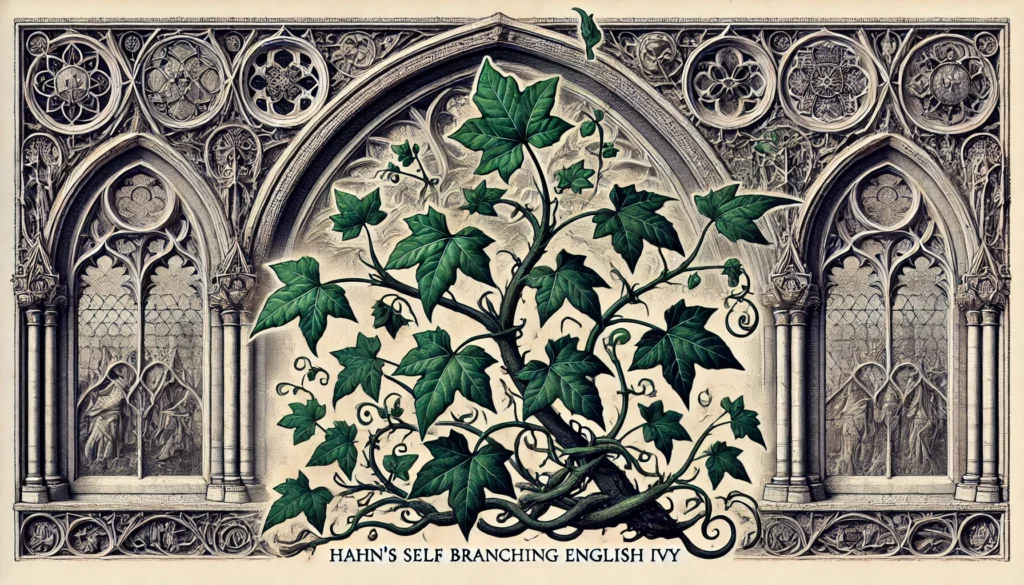

Home » Cat Plants » Is the Hahn's Self Branching English Ivy Plant Harmful to Cats?

Hahn’s Self Branching English Ivy, also known as branching ivy, glacier ivy, needlepoint ivy, sweetheart ivy, California ivy, and English ivy, is toxic to cats. This popular houseplant and landscaping vine contains triterpenoid saponins that can cause mild to moderate toxicity if ingested by felines.
Hahn’s Self Branching English Ivy is commonly found in gardens, yards, and as a decorative indoor plant across the United States.
Ingestion may cause mild gastrointestinal upset, but is generally not life-threatening.
Ingestion can result in mild symptoms like vomiting, diarrhea, or drooling. Rarely fatal but may require veterinary care.
Eating these plants can lead to more pronounced symptoms like abdominal pain, lethargy, or difficulty breathing. Veterinary intervention may be necessary.
Ingesting even small amounts can cause severe symptoms like organ damage, seizures, or cardiac failure without rapid treatment.
All parts of these plants are extremely poisonous to cats and can quickly lead to death, even with immediate veterinary care.
** Please note: Please note that toxicity level can vary based on the amount ingested and the specific cat. It's always best to keep these plants completely inaccessible to cats and seek immediate veterinary care or call the poison hotline if you suspect your cat has ingested any part of a toxic plant.
If a cat ingests any part of a Hahn’s Self Branching English Ivy plant, it may experience various symptoms due to the irritating effects of the triterpenoid saponins found in the plant’s sap. Common signs of ivy poisoning in cats include:
In severe cases of large ingestions, cats may exhibit labored breathing, convulsions, and even fall into a coma. While rare, fatalities have been reported in livestock due to English ivy poisoning.
If you suspect your cat has ingested Hahn’s Self Branching English Ivy, it is crucial to contact your veterinarian immediately. The diagnostic process may include:
Your veterinarian will also ask about your cat’s access to potential toxins and review their medical history to help determine the cause of the symptoms.

A: Yes, Hahn’s Self Branching English Ivy is toxic to cats. Ingesting this plant can cause symptoms such as vomiting, abdominal pain, and drooling.
A: Symptoms of Hahn’s Self Branching English Ivy poisoning in cats include vomiting, drooling, and abdominal pain. Cats may also experience diarrhea and lethargy.
A: If your cat has ingested Hahn’s Self Branching English Ivy, seek immediate veterinary care. Treatment typically involves supportive care to manage symptoms and prevent further complications.
A: Yes, other plants like Common Ivy and Boston Ivy are also toxic to cats. It’s essential to keep these and other harmful plants out of reach of your pets.
A: To prevent your cat from eating Hahn’s Self Branching English Ivy, place the plant in an area inaccessible to your cat or choose pet-safe plants. Providing alternative chew toys and engaging activities can also help deter your cat from chewing on houseplants.
A: If your cat shows signs of poisoning after eating Hahn’s Self Branching English Ivy, contact your veterinarian immediately. Prompt treatment is crucial to alleviate symptoms and prevent serious health issues.
Hahn’s Self Branching English Ivy is a cultivar of the species Hedera helix, which is native to Europe, western Asia, and northern Africa. This evergreen vine has been used in landscaping for centuries, with records dating back to ancient Roman times. The plant gained popularity in the United States during the 19th century and has since become a common sight in gardens, public spaces, and as an indoor houseplant.
The Hahn’s Self Branching variety was developed as a more compact and less aggressive alternative to the standard English ivy, making it a popular choice for containers and smaller spaces. Despite its ornamental appeal, the plant’s toxicity to pets and its potential to become invasive in some regions have led to increased awareness about the risks associated with growing English ivy.
Please note: The information shared in this post is for informational purposes only and should not be considered as veterinary medical advice.
🐾 A hilarious or heart-melting cat video
🐾 Our latest paws-on review of a cool cat toy